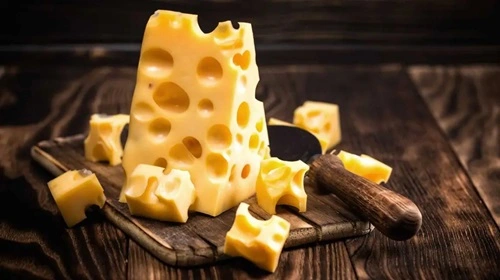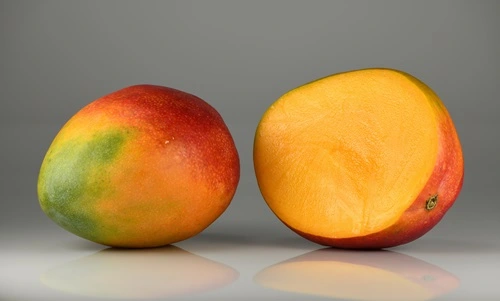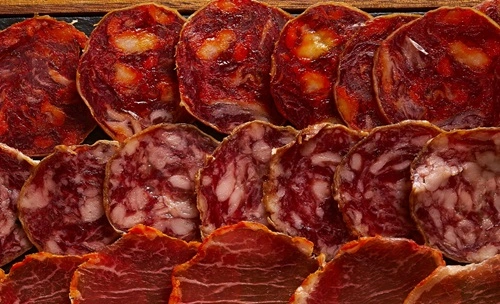Cheese is a staple in many cultures and a favorite food for millions worldwide. With its countless varieties, flavors, and textures, cheese has captured the hearts and taste buds of people from all walks of life. From the art of cheese-making to surprising health benefits, cheese is much more than just a delicious addition to meals. Here are 10+ intriguing facts about cheese that will give you a deeper appreciation for this beloved dairy product.

1. Cheese-Making Dates Back Thousands of Years
Cheese is one of the oldest foods in human history, with evidence of cheese-making dating back as far as 5,000 B.C. Archaeological discoveries suggest that ancient civilizations in Mesopotamia and Egypt produced cheese as a way to preserve milk. It’s believed that cheese was accidentally discovered when milk was stored in animal stomachs, which contain natural enzymes that curdle the milk. Since then, cheese has evolved into a global culinary staple with a rich and varied history.
2. There Are Over 1,800 Types of Cheese
Cheese is incredibly diverse, with over 1,800 recognized varieties worldwide. Each type of cheese has a unique texture, flavor, and appearance depending on factors like the milk source, aging process, and geographical origin. From creamy Brie and sharp Cheddar to smoky Gouda and tangy Blue cheese, there’s a type of cheese for every taste preference. Each region has its own specialities, and many types of cheese are protected by “appellation of origin” laws, ensuring that only products made in a specific area can bear certain names.
3. Cheese Contains Beneficial Bacteria
While bacteria often get a bad rap, certain bacteria are essential in cheese-making. Beneficial bacteria help ferment the milk, giving cheese its distinct flavors and textures. Some bacteria even provide health benefits, acting as probiotics that support digestive health. For example, cheeses like Gouda, Swiss, and Parmesan contain strains of lactic acid bacteria that may benefit gut health. So, some types of cheese might actually be good for you in moderation!
4. Blue Cheese is Made Using Mold
Blue cheese, with its iconic blue or green veins, is created by introducing specific strains of mold, such as Penicillium roqueforti, into the cheese-making process. The mold creates the characteristic veins and gives blue cheese its bold, tangy flavor. Blue cheese’s unique taste is beloved by some and avoided by others, but for those who enjoy it, the moldy appearance is part of the charm.
5. Some Cheese Varieties Are Aged for Decades
The aging process, or “affinage,” plays a crucial role in developing a cheese’s flavor. While some cheeses are ready to eat after just a few days, others are aged for months, years, or even decades. Parmigiano-Reggiano, for example, is often aged for two to four years to develop its rich, nutty flavor. Other rare cheeses, such as certain types of vintage Cheddar, can be aged for up to 20 years, resulting in an intense, complex taste profile.
6. Cheese Is a Nutrient-Dense Food
In addition to its delicious flavor, cheese is packed with nutrients. It’s an excellent source of protein, calcium, and essential vitamins like B12 and A. High-quality cheeses can also contain omega-3 fatty acids, which are beneficial for heart health. Cheese can be high in fat, but eating it in moderation can be part of a balanced diet, providing essential nutrients and even supporting bone health.
7. The World’s Most Expensive Cheese Is Made from Donkey Milk
The world’s most expensive cheese, called Pule, comes from the milk of Balkan donkeys and is produced exclusively in Serbia. Due to the difficulty of milking donkeys (which produce very small amounts of milk daily) and the complex production process, Pule cheese can cost up to $1,000 per pound. It’s known for its crumbly texture and mild, earthy flavor, making it a unique and luxurious cheese experience.
8. Cheddar Cheese Isn’t Naturally Orange
The bright orange color associated with many Cheddar cheeses is actually not natural. Cheddar cheese is originally white to pale yellow, but cheese producers began adding annatto, a natural dye derived from the seeds of the achiote tree, to create the orange color. This tradition started in England to maintain a consistent appearance and make the cheese look richer, as certain cows’ milk produced a yellowish cheese due to the grass in their diet.
9. Some People Are Genetically Predisposed to Love Cheese
Scientists have found that some people have genetic variations that make them more sensitive to the flavors of cheese. Cheese contains certain fatty acids that can trigger pleasure receptors in the brain, creating a mild “addiction” in cheese lovers. Cheese also contains casein, a protein that releases casomorphins, compounds that can have calming effects similar to opioids—though in much smaller, safe amounts.
10. Italy Is the Birthplace of Parmesan and Mozzarella
Italy is home to some of the world’s most famous and cherished cheeses, including Parmesan (Parmigiano-Reggiano) and Mozzarella. Parmesan, often called the “king of cheeses,” is produced exclusively in specific regions of Italy and is made from cow’s milk and aged for a minimum of 12 months. Mozzarella, traditionally made from water buffalo milk, is the essential cheese for Italian dishes like pizza and Caprese salad. Italy’s cheeses are protected by strict laws, ensuring authenticity and preserving the centuries-old traditions of Italian cheese-making.
11. Cheese Production Relies on Enzymes from Animal Stomachs
One of the key enzymes in traditional cheese-making is rennet, which is derived from the stomach lining of young animals, typically calves. Rennet helps coagulate milk, forming the curds needed to make cheese. Today, many cheeses are made with microbial or plant-based rennet alternatives to cater to vegetarians and those who prefer not to consume animal-derived enzymes. However, traditional cheese-makers still use animal rennet for specific cheeses, believing it provides a unique texture and flavor.
12. The United States Is the World’s Largest Cheese Producer
The United States is the world’s largest producer of cheese, responsible for over 30% of the global cheese supply. Wisconsin, often called “America’s Dairyland,” and California are the top cheese-producing states. The U.S. is famous for its cheddar, mozzarella, and processed cheeses, but artisanal cheese-making has been on the rise, with small-scale producers creating specialty cheeses that rival European varieties.
13. Cheese Consumption Is Higher Than Ever
Cheese consumption has been steadily increasing worldwide, with the average American consuming over 40 pounds of cheese per year. Some of the most popular types in the U.S. include Cheddar, Mozzarella, and American cheese. This trend is partly driven by the popularity of foods that use cheese as a main ingredient, like pizza, burgers, and pasta.
14. There’s a Science Behind Cheese Pairings
Cheese pairings have become an art form, with cheese enthusiasts and sommeliers working to identify which cheeses pair best with certain wines, beers, and foods. For example, rich and creamy cheeses like Brie pair well with sparkling wines, while sharp, aged cheeses like Gouda complement full-bodied red wines. The art of cheese pairing has led to a booming industry, with tasting events, cheese boards, and specialty shops dedicated to creating the perfect flavor combinations.
15. Cheese Can Develop “Cheese Crystals”
Aged cheeses, like Parmesan and Gouda, often contain small, crunchy crystals that develop over time. These crystals aren’t salt; they’re actually a result of the cheese-aging process. Tyrosine crystals, a type of amino acid, form in cheese as proteins break down during aging. These crystals add a delightful crunch and are a sign of a well-aged cheese.
From ancient origins to gourmet creations, cheese is one of the most diverse and beloved foods in the world. Whether you enjoy a mild Brie, a bold Blue, or a sharp Cheddar, there’s a type of cheese for everyone’s taste. With fascinating histories, complex production methods, and a growing variety of flavors, cheese continues to captivate food lovers around the globe. So the next time you indulge in a cheesy dish, remember the rich heritage and science behind that savory slice or creamy spread.



